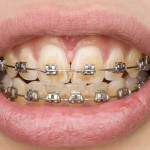
The need and demand for orthodontic treatment continues to grow. In order to achieve the desired orthodontic tooth movements forces are applied to the teeth and supporting structures. It has been shown that these forces can affect the dental pulp with a number of studies being conducted to demonstrate the effects on pulp vitality.
The aim of this review was to evaluate whether there is scientific evidence to support the possibility that orthodontic tooth movements could induce pulp necrosis.
Methods
Searches were conducted in the Cochrane Library, Embase, LILACS, Medline/PubMed, and SciELO, Scopus, Web of Science, OpenGrey and Grey Literature databases. Randomised clinical trials (RCTs), nonrandomized clinical trials (nRCTs) and longitudinal studies evaluating the pulp status of subject to orthodontic tooth movement assessed using of teeth subjected to orthodontic movements using laser doppler flowmetry (LDF) or pulse oximetry (PO) and published in English were considered. Two reviewers independently selected studies extracted data and assess risk of bias using the Cochrane domains-based tool for RCTs and the Risk Of Bias In Non-randomised Studies of Interventions (ROBINS-I) for nRCTs. The Grading of Recommendations Assessment, Development, and Evaluation (GRADE) tool was used to assess the overall certainty of the evidence.
Results
- 12 studies (5 RCTs, 1 nRCT,6 prospective) were included.
- Laser doppler flowmetry was used in all 12 studies.
- 4 of the 5 RCTs were considered to be at unclear risk of bias and one at high risk. Operator blinding was not assessed as it was not possible.
- 4 of the non-randomised studies were considered to be at high risk of bias, 2 a moderate risk and one a low risk.
- 4 studies used pre-adjusted edgewise fixed appliances one study used clear aligners in one of the groups, 3 used mini-implants, 2 used an intrusive force apparatus, 2 studies used fixed orthodontic devices, one study used a removable device, and one study used an acrylic bonded device for rapid maxillary expansion.
- A range of tooth movements were examined, tipping, retraction, intrusion, maxillary expansion, extrusive movements and alignment and levelling.
- 4 studies reported the forces applied in in grams (g) ranging from 5 to 500 g and 3 reported forces in Newtons (N), ranging from 0.5 to 2 N.
- 8 studies reported on the duration of forces, which ranged from 4 min to 6 months.
- 10 studies reported on pulpal blood flow (PBF) of incisors and canines and 4 of molars and premolars.
- The majority (10 studies) reported vascular alterations causing a reduction in pulpal blood flow, followed by an increase and return to average values.
Conclusions
The authors concluded: –
….when evaluating the pulp status after orthodontic treatments, using LDF, there is evidence that these treatments do not induce pulp necrosis. However, this evidence has low to very low quality and more well-designed studies are necessary. Therefore, orthodontic treatments should still be performed with caution, respecting the use of low forces.
Comments
We have previously looked at a review assessing the effect of orthodontic forces on the dental pulp (Dental Elf – 16th Dec 2014). This new review focuses on whether orthodontic forces result in pulp necrosis. The authors have searched a wide range of databases although restricting inclusion to English language studies may result in excluded some relevant papers. The authors also decided to restrict inclusion to studies using laser doppler flowmetry or pulse oximetry to assess the pulp are they have been shown to be more accurate (Dental Elf – 13th Jun 2018). Consequently, fewer studies are included in this review than the 2014 review. There was a high degree of heterogeneity among the included studies with variation in the type of appliance, amount and duration of forces applied so meta-analysis was not undertaken. In addition, many of the included studies were small in size. As a result the quality of the included studies and the certainty of the findings is very low so the review should be interpreted cautiously.
Links
Primary Paper
Weissheimer T, Silva EJNL, Pinto KP, Só GB, Rosa RA, Só MVR. Do orthodontic tooth movements induce pulp necrosis? A systematic review. Int Endod J. 2021 Mar 29. doi: 10.1111/iej.13523. Epub ahead of print. PMID: 33780015.
Other references
Dental Elf – 16th Dec 2014
Orthodontic forces: insufficient evidence of their effect on the dental pulp
Dental Elf – 13th Jun 2018
